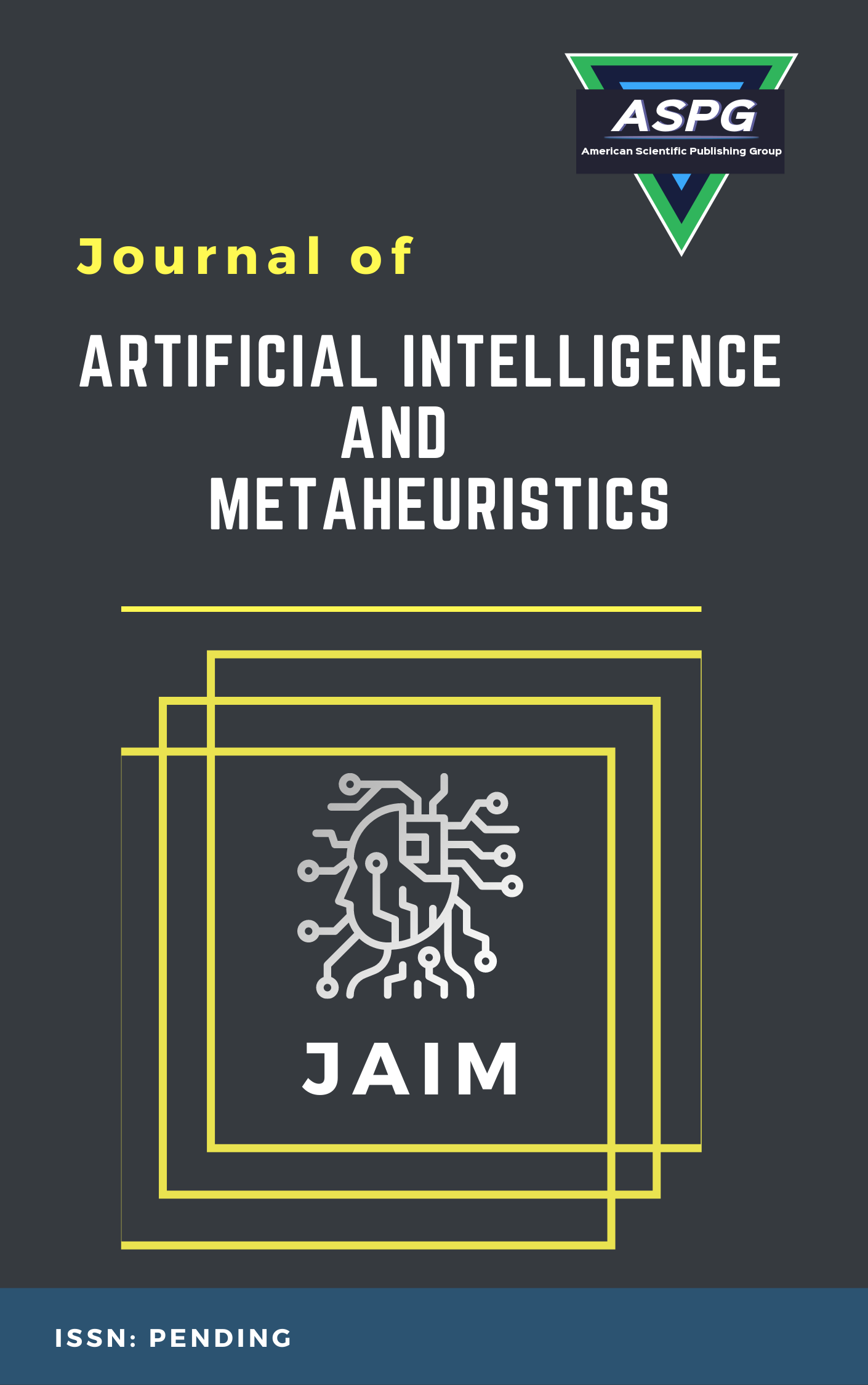

Volume 5 , Issue 1 , PP: 29-37, 2023 | Cite this article as | XML | Html | PDF | Full Length Article
Doaa Sami Khafaga 1 * , Abdelhameed Ibrahim 2 , S. K. Towfek 3 , Nima Khodadadi 4
Doi: https://doi.org/10.54216/JAIM.050103
Due to its potential to enhance patient outcomes and ease individualized therapy, predictive medicine has received considerable interest in recent years. In this article we examine the use of data mining in predictive medicine, with a particular emphasis on hemodynamic prediction for abdominal aortic aneurysm (AAA) disease. In AAA, the abdominal aortic wall becomes weakened and may rupture, putting the patient's life in danger. Clinical decision making and treatment planning for AAA rely heavily on accurate hemodynamic prediction. For developing these predictive models for hemodynamic assessment, we use the well-known data mining techniques of Random Forest (RF) and AdaBoost. To capture complicated interactions, the RF approach employs a collection of decision trees, while AdaBoost iteratively improves the model by giving more weight to examples that were incorrectly classified. The experimental evidence shows that these methods are effective in providing reliable estimates of the hemodynamics of AAA. This research adds to the expanding field of predictive medicine by providing new understanding of the potential of data mining methods to improve the quality of care for patients with AAA illness.
Predictive medicine , Data mining , Hemodynamic prediction , Abdominal aortic aneurysm (AAA) , Random Forest , AdaBoost.
[1] Alharbi AH et al., Diagnosis of Monkeypox Disease Using Transfer Learning and Binary Advanced Dipper Throated Optimization Algorithm. Biomimetics, 8(3),313, 2023.
[2] Canchi T, Kumar S D, Ng E Y K, Narayanan S, A review of computational methods to predict the risk of rupture of abdominal aortic aneurysms. BioMed research international, 2015.
[3] Alber S. Aziz, Hoda K. Mohamed, Ahmed Abdelhafeez, Unveiling the Power of Convolutional Networks: Applied Computational Intelligence for Arrhythmia Detection from ECG Signals. Journal of International Journal of Advances in Applied Computational Intelligence, 1 (2), 63-72, 2022.
[4] Filipovic N, Ivanovic M, Krstajic D, Kojic M, Hemodynamic flow modeling through an abdominal aorta aneurysm using data mining tools. IEEE Transactions on Information Technology in Biomedicine, 15(2),189-194, 2010.
[5] Raffort J, Adam C, Carrier M, Ballaith A, Coscas R, Jean-Baptiste E, Hassen-Khodja R, Chakfé, N, Lareyre F, Artificial intelligence in abdominal aortic aneurysm. Journal of vascular surgery, 72(1), 321-333, 2020.
[6] Heba R Abdelhady, Mahmoud M Ismail, Cardiovascular Diseases Forecasting using Machine Learning Models. Journal of International Journal of Advances in Applied Computational Intelligence, 1(2), 56-62, 2022.
[7] Mohamed Saber, A novel design and Implementation of FBMC transceiver for low power applications, Indonesian Journal of Electrical Engineering and Informatics (IJEEI), 8(1), 83-93, 2020.
[8] M. Saber, Efficient phase recovery system, Indonesian Journal of Electrical Engineering and Computer Science (lJEECS), 5(1), 123-129, 2017.
[9] Jiang Z, Do H N, Choi J, Lee W, Baek S, A deep learning approach to predict abdominal aortic aneurysm expansion using longitudinal data. Frontiers in Physics, 7, p.235, 2020.
[10] Ahmed Abdelmonem, Shimaa S Mohamed, Deep Learning Defenders: Harnessing Convolutional Networks for Malware Detection. Journal of International Journal of Advances in Applied Computational Intelligence, 1 (2), 46-55, 2022.
[11] Eid Marwa M, Fawaz Alassery, Abdelhameed Ibrahim, and Mohamed Saber, Metaheuristic optimization algorithm for signals classification of electroencephalography channels. Computers, Materials & Continua, 71(3), 4627-4641, 2022.
[12] Ren S, Guidoin R, Xu Z, Deng X, Fan Y, Chen Z, Sun A, Narrative review of risk assessment of abdominal aortic aneurysm rupture based on biomechanics-related morphology. Journal of Endovascular Therapy, p.15266028221119309, 2022.
[13] Kontopodis N, Tzirakis K, Ioannou C V, The obsolete maximum diameter criterion, the evident role of biomechanical (pressure) indices, the new role of hemodynamic (flow) indices, and the multi-modal approach to the rupture risk assessment of abdominal aortic aneurysms. Annals of Vascular Diseases, 11(1), 78-83, 2018.
[14] Newman A B, Arnold A M, Burke G L, O'Leary D H, Manolio T A, Cardiovascular disease and mortality in older adults with small abdominal aortic aneurysms detected by ultrasonography: the cardiovascular health study. Annals of Internal Medicine, 134(3), 182-190, 2001.
[15] Ismail Eyad Samara, Intelligent systems and AI techniques: Recent advances and Future directions. Journal of International Journal of Advances in Applied Computational Intelligence, 1 (2), 30-45, 2022.
[16] Abdar M, Using decision trees in data mining for predicting factors influencing of heart disease. Carpathian Journal of Electronic and Computer Engineering, 8(2), p.31, 2015.
[17] Khder Alakkari, Mostafa Abotaleb, Amr Badr, Ammar Kadi, A M Ghazi Al khatib, Bayan Mohamad Alshaib, El-Sayed M El-kenawy, Modelling Weather Conditions Using Encoder-Decoder and Attention Based on LSTM Deep Regression Model. Journal of International Journal of Advances in Applied Computational Intelligence, 1 (2), 08-29, 2022.
[18] M. M. E. Bahy, S. A. Ward, M. Badawi and R. Morsi, "Particle-initiated negative corona in co-axial cylindrical configuration. Annual Report Conference on Electrical Insulation and Dielectric Phenomena, Montreal, QC, Canada, 343-348, 2012.
[19] E. M. Shaalan, S. M. Ghania and S. A. Ward, Analysis of electric field inside HV substations using charge simulation method in three dimensional. Annual Report Conference on Electrical Insulation and Dielectic Phenomena, West Lafayette, IN, USA,1-5, 2010.
[20] Mohamed A. Abouelatta, et al. , Measurement and assessment of corona current density for HVDC bundle conductors by FDM integrated with full multigrid technique. Electric Power Systems Research, 199, 2021.
[21] Amin Samy, Sayed A. Ward, Mahmud N Ali, Conventional Ratio and Artificial Intelligence (AI) Diagnostic methods for DGA in Electrical Transformers. International Electruical Engineering Journal, 6, 2096-2102, 2015.
[22] El-kenawy El-Sayed M, Marwa M Eid, Abdelhameed Ibrahim, Anemia estimation for covid-19 patients using a machine learning model. Journal of Computer Science and Information Systems, 17(11), 2021.